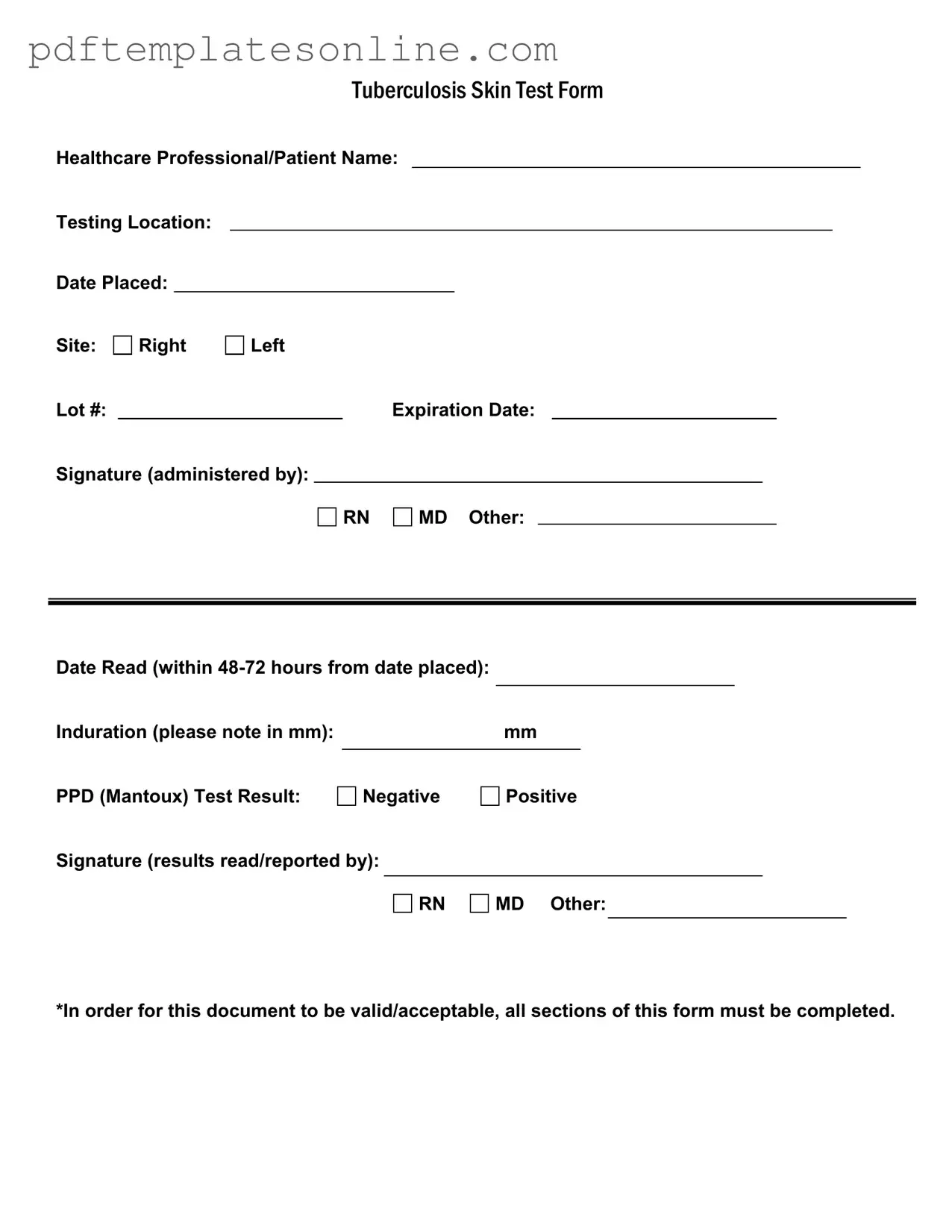Filling out the Tuberculosis (TB) Skin Test form may seem straightforward, but many people make common mistakes that can lead to complications or delays in their testing process. One of the primary errors is failing to complete all sections of the form. Each part of the document is essential for it to be considered valid. Missing information can result in the form being rejected, requiring individuals to start the process over.
Another frequent mistake involves not providing accurate personal information. When individuals fill in their name or the testing location, any inaccuracies can create confusion. This may lead to difficulties in tracking results or scheduling follow-up appointments. It is crucial to double-check that all names and locations are correctly entered.
People often overlook the importance of the date placed and the date read sections. The TB test must be read within 48 to 72 hours after placement. If the dates are not clearly marked, healthcare professionals may struggle to interpret the results correctly. This oversight can delay necessary medical interventions or further testing.
Another common error is neglecting to indicate the site of the test placement. The form requires a choice between the right or left arm. Failing to specify this can lead to confusion about where the test was administered, which may affect the reading process.
Individuals sometimes forget to document the induration measurement. This measurement, noted in millimeters, is crucial for determining whether the test result is positive or negative. Without this information, healthcare providers cannot accurately assess the test outcome.
Additionally, some people mistakenly leave out the signature of the healthcare professional who administered the test. This signature is vital for validating the results and ensuring that the test was conducted properly. Omitting it may raise questions about the legitimacy of the test.
Another error is failing to check the lot number and expiration date of the PPD (Mantoux) solution used for the test. This information is necessary to confirm that the test was performed with a valid product. If this information is missing or incorrect, it can lead to questions about the reliability of the results.
Lastly, individuals may misinterpret the test results section. It is important to clearly indicate whether the result is negative or positive. Mislabeling can lead to misunderstandings about a person's health status, potentially resulting in unnecessary anxiety or missed treatment opportunities.
